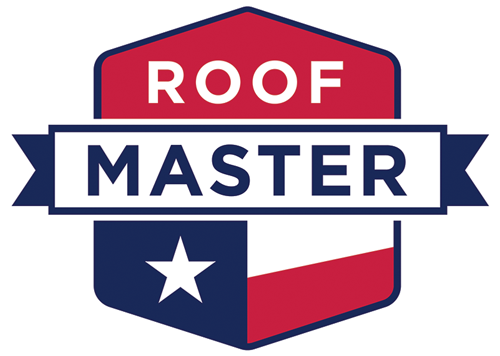If you want to reinforce your concrete roof’s strength using rubber, but don’t know how to put rubber roofing on concrete correctly, worry no more. Here, you will not only learn what rubber roofing is, but you will also understand its importance on the roof.
What is Rubber Roofing?
Also known as EPDM, rubber roofing is the most long-lasting system of roofing on flat roof surfaces. You can also use it as a weatherproofing solution. EPDM consists of ethylene and propylene sourced from oil and natural gas.
Rubber roofing materials come in black or white colors. They also come in a range of widths, contingent on the requirements required for the installation. You can install the EPDM in three different ways: mechanically attached, ballasted, and fully adhered.
Can You Put Rubber Roofing on Concrete?
In most cases, roofers use EPDM membranes as waterproof barriers underneath exposed cement screeds. That’s because they provide a more robust alternative to the traditional Visqueen membranes, which can get damaged by aggregates in the cement.
You can perfectly install rubber roofing on reinforced roof decks above underground structures. The EPDM membranes provide an attractive waterproof finish to the roofs. However, they are designed only to withstand foot traffic.
If you are to use the roof deck as a balcony for garden planters and furniture, you’ll need a more rigid finished surface. The addition of the EPDM membrane over cement will offer a more robust wear-resistant roof surface that can withstand elements.
How to Install Rubber Roofing
There are four main stages involved when installing an EPDM rubber roof. The stages guarantee a smooth and error-free installation and improve longevity.
- Clean your Roof
Cleaning the roof may look like an obvious step, but it is crucial to ensure that you do it exhaustively. Cleaning the roof inhibits lumps or areas that cannot join with adhesive once you lay down the material.
Start by removing any debris that may already be on the roof, such as old shingles or leaves. Also, fill any gaps on the rooftop using wood strips since the rubber material can’t clasp to any gaps of more than a quarter of an inch.
- Position the EPDM Membrane
Position the EPDM membrane across the roof’s surface and roll the material to lay it down. Let any folds or creases fall out by leaving the material for twenty to thirty minutes. Next, find the bottom half of the rubber strip on top of the upper section before sweeping a brush over the bare rubber to guarantee it’s flat and smooth.
- Trim the Material
Trimming generally happens near the end of the job. However, it is crucial to eliminate unnecessary parts of the membrane proving hard to work with during the installation process.
- Apply the Adhesive
After pulling back half of the membrane, always apply a water-based adhesive to the decking. Ensure the gum is not more than 150mm to the roof’s edges, where you’ll apply the contact paste later.
For the ends and any details on the roof, a sturdier contact adhesive allows you to stick the membrane down into corners and other problematic areas of the surface.
Choosing the Ideal EPDM Trimming
Other than presenting a visually stunning finish, rubber roofing trims have other practical uses too. For example, the edge prunes are expected to keep water on your roof and direct it to a drip trim. That enables the water to trickle off the rooftop and into a gutter.
EPDM Drip Trims
Always stay steady with edge and drip trims. If you opt for plastic edge trims, you can choose from two types of drip trims; the two-part clip together and the two-part drip trim. Both require a plate nailed into position.
The former firmly trap the membrane without using extra nails, while the latter needs the membrane to be nailed into place too.
EPDM Edge Trims
An edge trim’s job is to keep water on the roof and wrap the fascia to give the most refined finish from below. Rubber roofing trims come in three distinct styles: plastic, kerb, and metal.
Your preferred choice depends on the type of project you are working on and how you wish the finish to appear.
Fitting Rubber Roofing Flashing
You have to fix the new rubber roofing over the flashings where a roof touches the structure wall. Occasionally, this is done with a plastic-coated metal flashing band, recognized as a wall trim.
You can attain similar results with a metal gutter drip trim if it is widespread. These are added into the mortar between the stonework and typically around 150mm above the roof deck.
How to Clean EPDM Roofing
Cleaning rubber roofing helps keep its appearance and qualities, as well as aiding you in conducting a roof inspection. It is easy to sweep or hose off any loose debris or dirt. Also, clean rubber roofing leaves you with a clear area to apply a rubber roof cleaner.
Working in small sections, smear the solution to the roof in a circular motion using a soft mop or brush. Additionally, clean the area well to remove any dirt from the membrane.
Common Rubber Roofing Problems
Similar to other types of roofing, EPDM comes with its share of challenges. However, you can avoid problems such as shrinkage. If you face any of the below challenges with your rubber roofing, be quick in seeking professional help.
- EPDM Leakage and Holes
Leakages occur for several reasons: punctures, shrinkage, and holes within the rubber roofing membrane. It’s vital to inspect your roof and clean it thoroughly to prevent leaks.
Though EPDM is a very versatile material, it can still experience punctures in extreme weather; however, it can be repaired easily.
- Bubbles and Blisters
Blisters and bubbles form in an EPDM roof once the vapor from bonding adhesives gets trapped. Though this can’t cause your rubber roofing to fail, it affects the appearance of your flat roof.
- Rubber Roofing Shrinkage
Shrinkage happens once membranes lack enough time to cool before being installed. Failing to adhere to the perimeter and angle changes fully can also lead to shrinkage of your EPDM. If you think your roof has shrunk, act fast by seeking professional advice.
Final Words
Rubber roofing membranes offer a striking waterproof finish to concrete roofs. Roofers use them frequently as a waterproof blockade under visible cement screeds. If you need to put rubber roofing on concrete, consider hiring a reputable roofing contractor.
Contact us for professional rubber roofing installation services at affordable prices.


